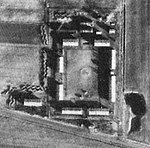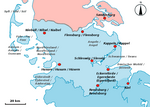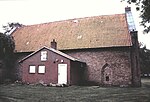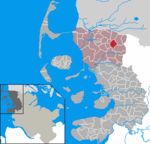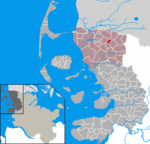Karrharde

Karrharde (North Frisian: Kårhiird; Danish: Kær Herred) was an amt (collective municipality) in the district of Nordfriesland, in Schleswig-Holstein, Germany. It was situated on the border with Denmark, approx. 35 km north of Husum, and 25 km west of Flensburg. Its seat was in Leck, itself not part of the amt. In January 2008, it was merged with the Ämter Bökingharde, Süderlügum and Wiedingharde, and the municipalities Niebüll and Leck to form the Amt Südtondern. The amt of Karrharde consisted of the following municipalities (as of 2005 population in parentheses): Achtrup (1548) Bramstedtlund (237) Enge-Sande (1150) Karlum (218) Klixbüll (932) Ladelund (1516) Sprakebüll (221) Stadum (1070) Tinningstedt (209) Westre (400)
Excerpt from the Wikipedia article Karrharde (License: CC BY-SA 3.0, Authors, Images).Karrharde
Schulstraße, Südtondern
Geographical coordinates (GPS) Address Nearby Places Show on map
Geographical coordinates (GPS)
| Latitude | Longitude |
|---|---|
| N 54.783333333333 ° | E 9.0333333333333 ° |
Address
Schulstraße
Schulstraße
25917 Südtondern
Schleswig-Holstein, Germany
Open on Google Maps




